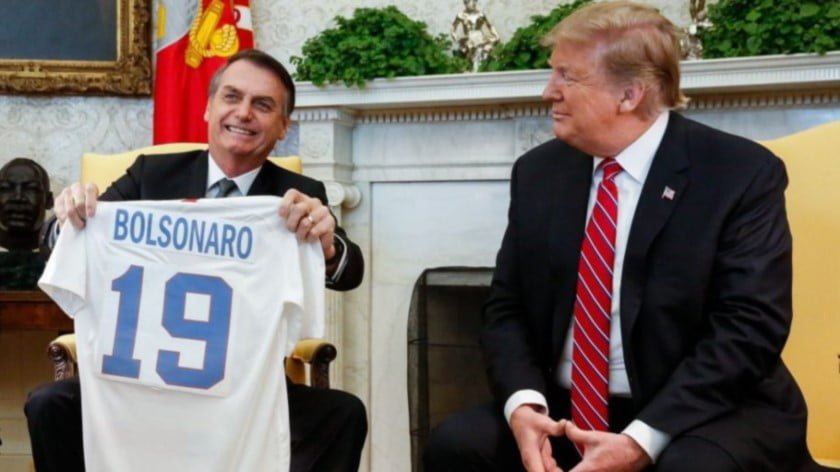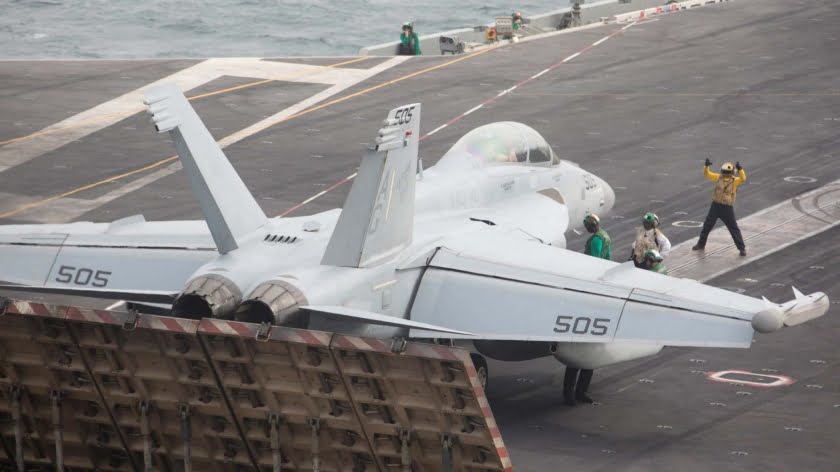Does Trump Really Think That China Hasn’t Identified His “Negotiating” Pattern?
Donald Trump has just threatened to implement a new round of tariffs on Chinese goods as Beijing is making plans to implement a 25% tariff on a variety of US imports valued at $50 billion. China’s new tariffs are of course a mirror of those which Trump imposed on Chinese imports to the US last week.
Now, Trump is planning on upping the stakes with a 10% tariff on an even wider variety of Chinese goods valued at $200 billion.
Just in from @WhiteHouse: @POTUS directs @USTradeRep to prepare new tariffs on $200 billion of goods from #China, citing “unacceptable” policies. pic.twitter.com/0x6Tn7FtbD
— Steve Herman (@W7VOA) June 19, 2018
China has likewise threatened to meet any new deluge of tariffs with a firm and proportional response, vowing to take no potential options off the table. According to Chinese Ministry of Commerce spokesman Gao Feng,
“We have noticed that many U.S. officials have hinted that the two sides are in talks, but that is not the real case”.
Gao went on to define the new round of a US-China trade war in the following way,
“It is a battle between unilateralism and multilateralism, and between protectionism and free trade as well”.
When it comes to short term retaliatory measures, China can resort to the following:
1. Implementing tariffs which mirror those of the US in quantifiable terms
2. Implementing tariffs which qualitatively target American legacy brands and US imports that are particularly popular among Chinese consumers
3. Continuing to open Chinese markets (as was planned for 2018 and 2019 long in advance) to the wider world while the US sees itself excluded owing to its failure to strike reciprocal deals with Beijing to open trade in both direction
4. Making free trade deals or near-free trade deals with other nations and blocs that are subject to US tariffs (Canada and the EU for example)
5. Gradually dumping more US Treasury bonds, of which China is currently the number one foreign holder
In reality, stages 1-2 will be implemented in a matter of days while stages 3 and 4 have been long standing goals on China’s part that will if anything, only be accelerated in terms of implementation due to the latest developments in the trade war with Washington. While dumping US Treasury bonds would only ever be a last resort for China, as China is already preparing the Yuan for the period when it will inevitably become a floating currency and then become among the world’s most valuable currencies, Beijing realises that as Chinese purchasing power increases, the entire dynamic of bilateral trade with the US will irrevocably change within the next two decades. When this happens, China will not only be the more productive of the two trading partners, but China will be the wealthier of the superpowers as China not only has less external debt than the US, but when the Yuan begins to float, China will eventually be wealthier than the US in plain dollar-for-dollar terms.
In the immediate future though, while China clearly means what it says in terms of taking no options of the table in a trade war that Beijing never asked for nor wanted, there is equally no chance that the policy makers in Beijing haven’t noticed a clearly emerging pattern in respect of how Donald Trump “negotiates” with both international rivals (like China), international adversaries (like the DPRK), or long standing allies (South Korea, Japan, European Union, Canada, Mexico).
The Trump method in trade, “diplomacy” and military matters is becoming clear and can be summarised as follows:
1. Make unreasonable demands
2. Follow the unreasonable demands with extraordinary and often blood curdling threats
3. Just when you think things can’t get worse – make even more unreasonable demands followed by even more extraordinary threats
4. Say that dialogue is an option but that if it fails the threats will be executed
5. Dramatically close the door on dialogue
6. Engage in dialogue and reach a compromise that should have been reached in the first place under more adult conditions – even though by now most members of the public and some politicians have forgotten the original threats because of Trump’s personal ability to go from a raging bully to a pleasant host – a kind of unpolished version of Ronald Reagan.
At the moment the US-China trade war is somewhere between stage two and three – the blood curdling threat being Trump’s announcement of new tariffs against Chinese imports worth $200 billion.
While Trump’s method is counterproductive, causes unneeded headaches for stocks, shares and currency markets and while he alienates many partners and potential partners in the process, the saving grace of Trump’s ‘mad method’ is that it has become increasingly predictable and thus, more easily managed by those on the receiving end of Trump’s threats and punitive measures.
A further truism regarding Trump’s framework for negotiations is that when it comes time to drop earlier threats and return to some form of dialogue, Trump is perhaps counter-intuitively more willing to enter fair negotiations with rivals or even adversaries than he is with America’s long standing friends. Much of this is to do with the fact that Trump seems to respect a challenge from an opponent, where in classic American fashion, he resents any signs of independence from a traditional subservient ally. Likewise, Trump is more willing to drop the threats and get back to business when a negotiating opponent clearly has something to offer. This is why it is likely that Trump will drop at least some aspects of his trade war with China before he drops sanctions against Russia. China is a major trading partner of the US and American businesses are deeply reliant on Chinese imports. The same is not true in respect of Russo-US bilateral relations.
The final component of Trump’s self-evident but unwritten methodology is that when dealing with an individual dialogue partner that he has fond feelings for personally, positive results are often far more forthcoming than they would be if working with someone for whom Trump has a personal distaste. Trump consistently calls Chinese President Xi Jinping a “friend”, while after months of insults, after meeting Kim Jong-un face to face, he praised him as a “talented” leader who wants the best for his country. Trump even joked that he wished his own staff would be as loyal and disciplined as those surrounding Kim.
Among America’s traditional allies, Trump maintains a generally good friendship with Japanese Prime Minister Shinzo Abe. The two have played golf together at Trump’s Mar-a-Lago resort and even though Trump feels ally Japan is “screwing” America on trade just as rival China is allegedly doing, Abe has got off lightly when compared with his Canadian and the EU counterparts. Much of this is because the EU’s strongest head of government is Angela Merkel, a close friend of Barack Obama and someone with hardly anything in common with Trump. Likewise, Canadian Prime Minister Justin Trudeau is the archetypal so-called “social justice warrior” who represents the stylistic antithesis of Trump who has an infamous disdain for anything “politically correct”. If one wonders if Trump has fun antagonising Merkel and Trudeau, it would seem that the answer is an unequivocal, “yes”.
Thus when all is said and done, while Trump has several stages to go before any meaningful dialogue between Beijing and Washington commences, in the long term, a deal may well be reached as China’s goals are actually compatible with those of the US President. Trump wants to increase US exports and China is rapidly engaged in a lowing of its own tariffs, all the while Beijing’s trade emissaries are going around the world encouraging countries to expand their imports to China.
Ironically, while Trump’s style is far more abrasive than that of Barack Obama and while Trump certainly has alienated many in China who would have expected a less childish zero-sum attitude from an American leader, Trump is in many ways more predictable at the end of the day than was Barack Obama. Without much rhetorical storm and fury, Obama exponentially increased US provocations against China in the South China Sea, while he took George Bush’s wars against the Arab world further than even many of Bush’s neocon advisers had imagined was possible. Finally, throughout much of his Presidency, Obama orchestrated violent fascist provocations on Russia’s borders without the slightest hint of conscientious hesitation, all the while engaging in profoundly racist attacks on Russia’s national characteristics.
In this sense, while Obama represented a kind of silent American killer, Trump is more of a bull in a china shop who ultimately climbs down from the brink after exhausting all other reasonable and especially unreasonable possibilities. Neither Obama nor Trump is ideal from the perspective of much of Asia, but China clearly knows not only how to leverage the US in a trade war but how to deal with Trump’s shenanigans on an individual level.







